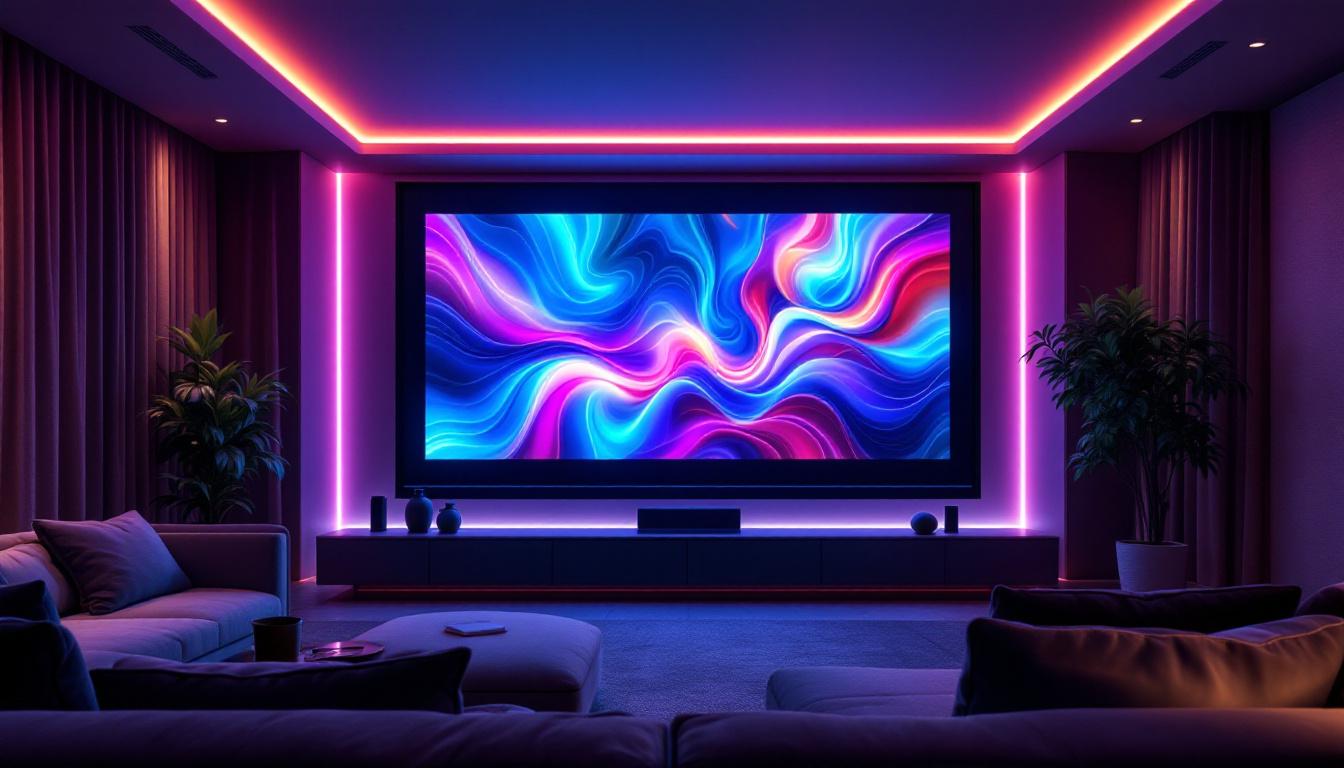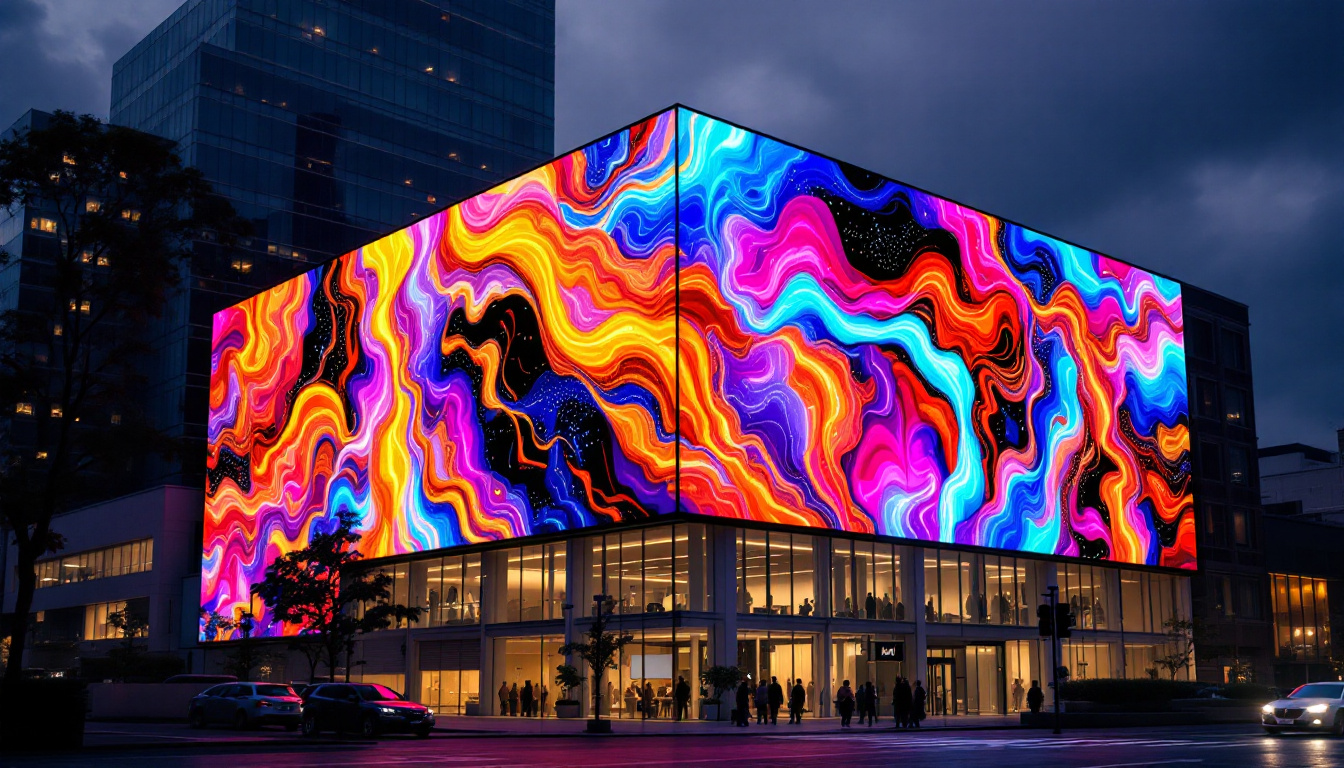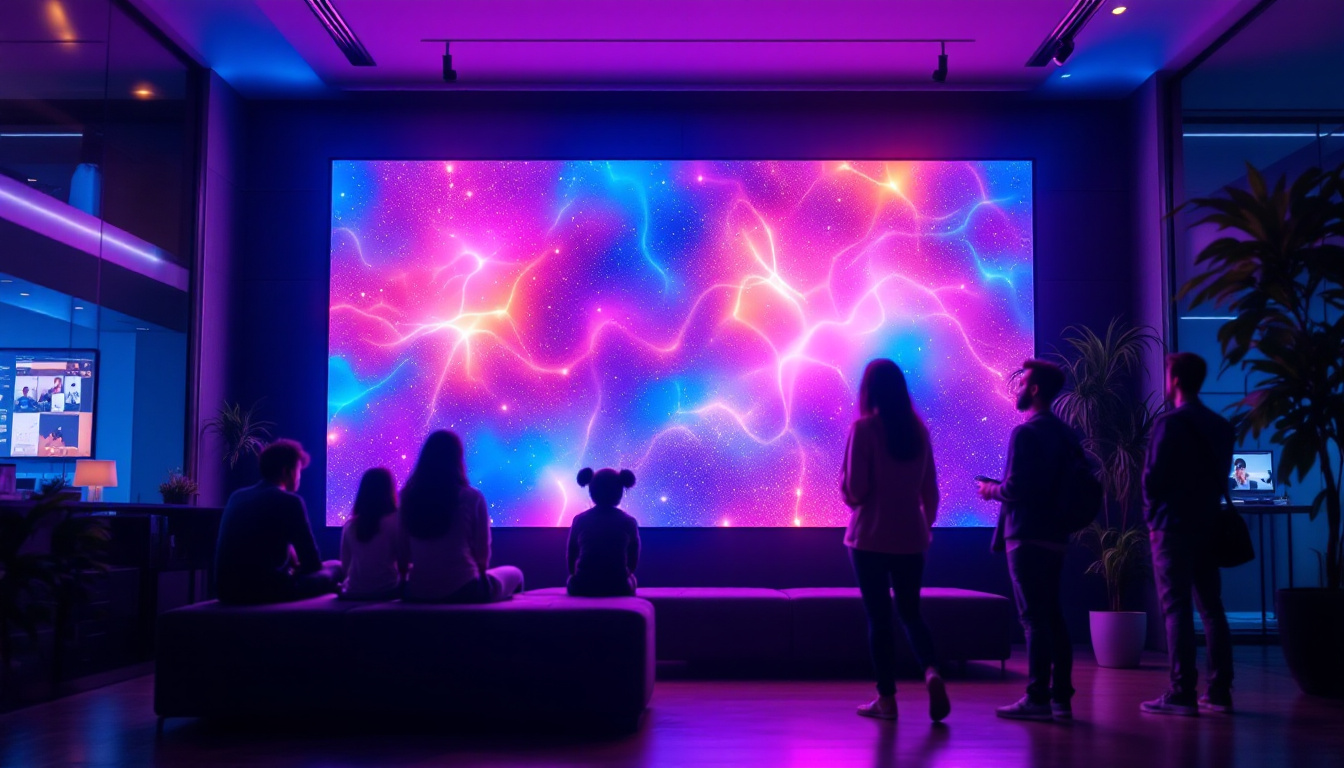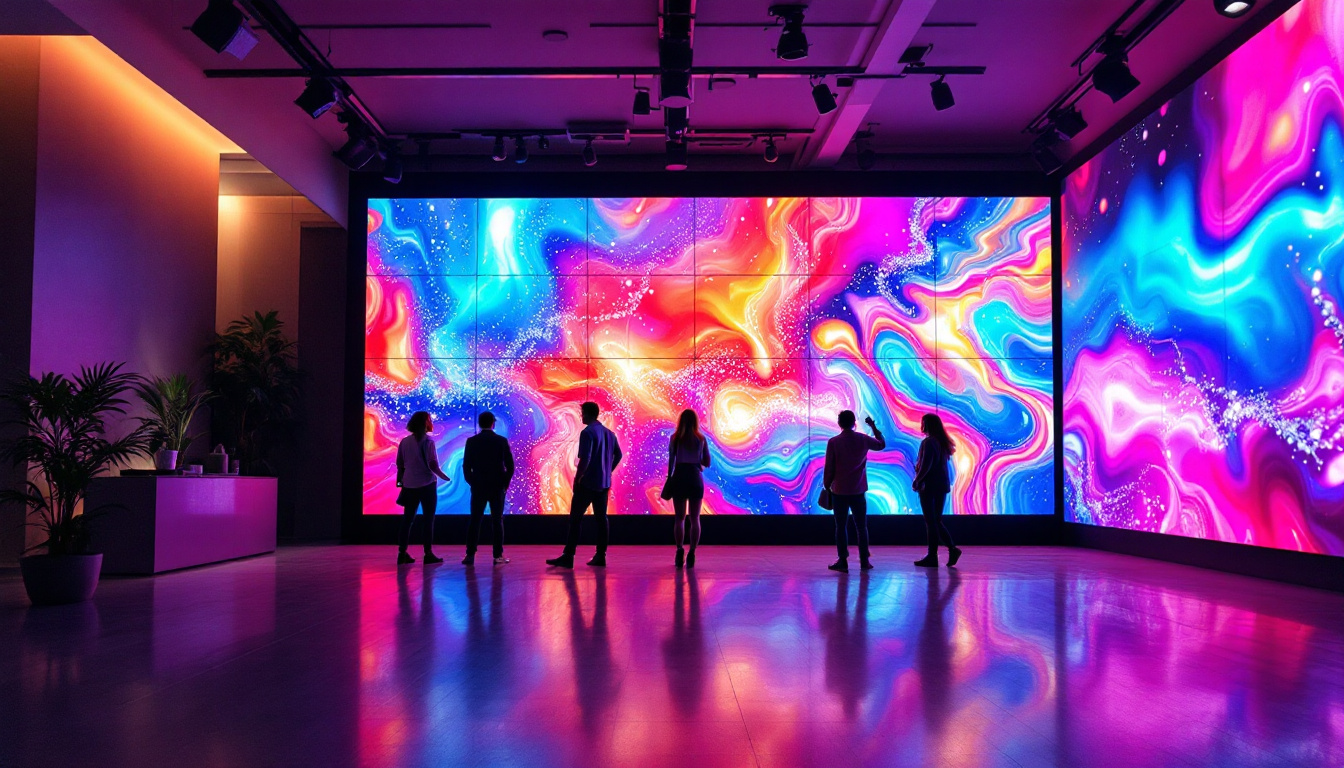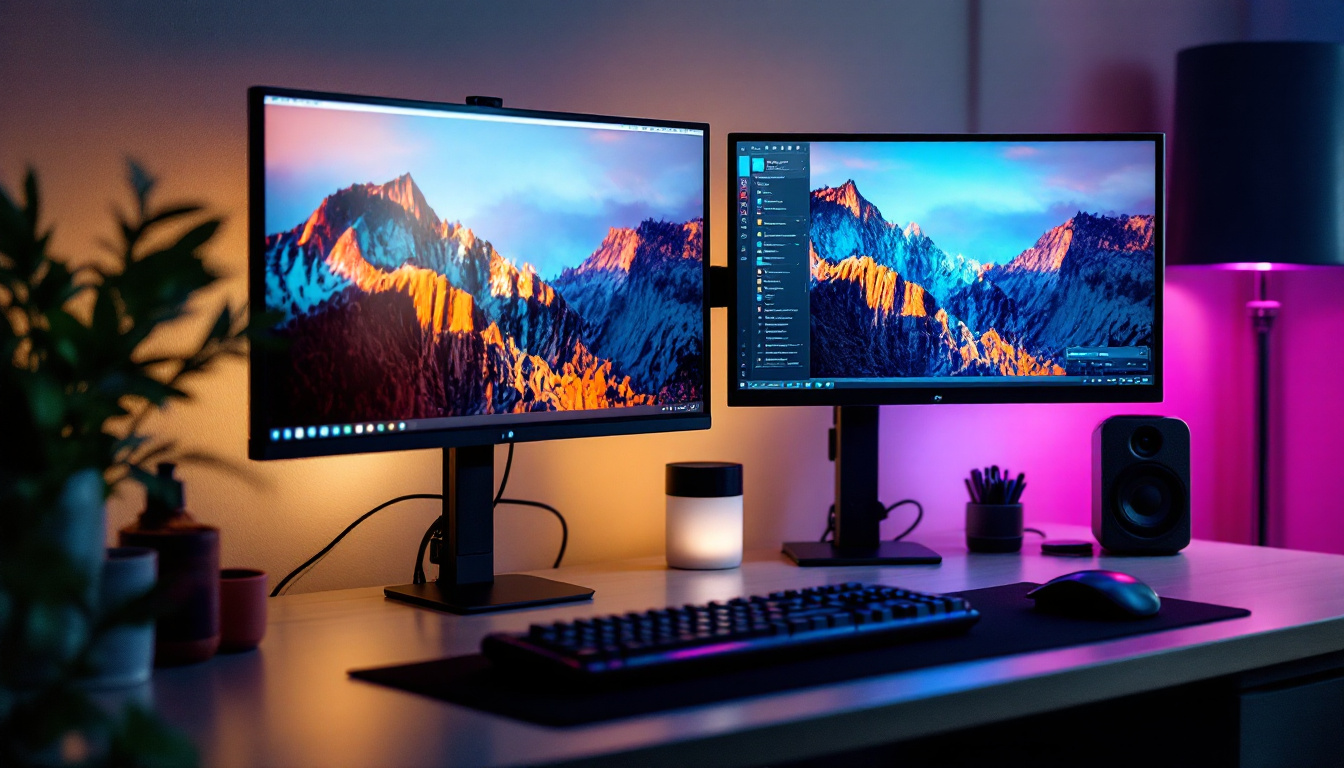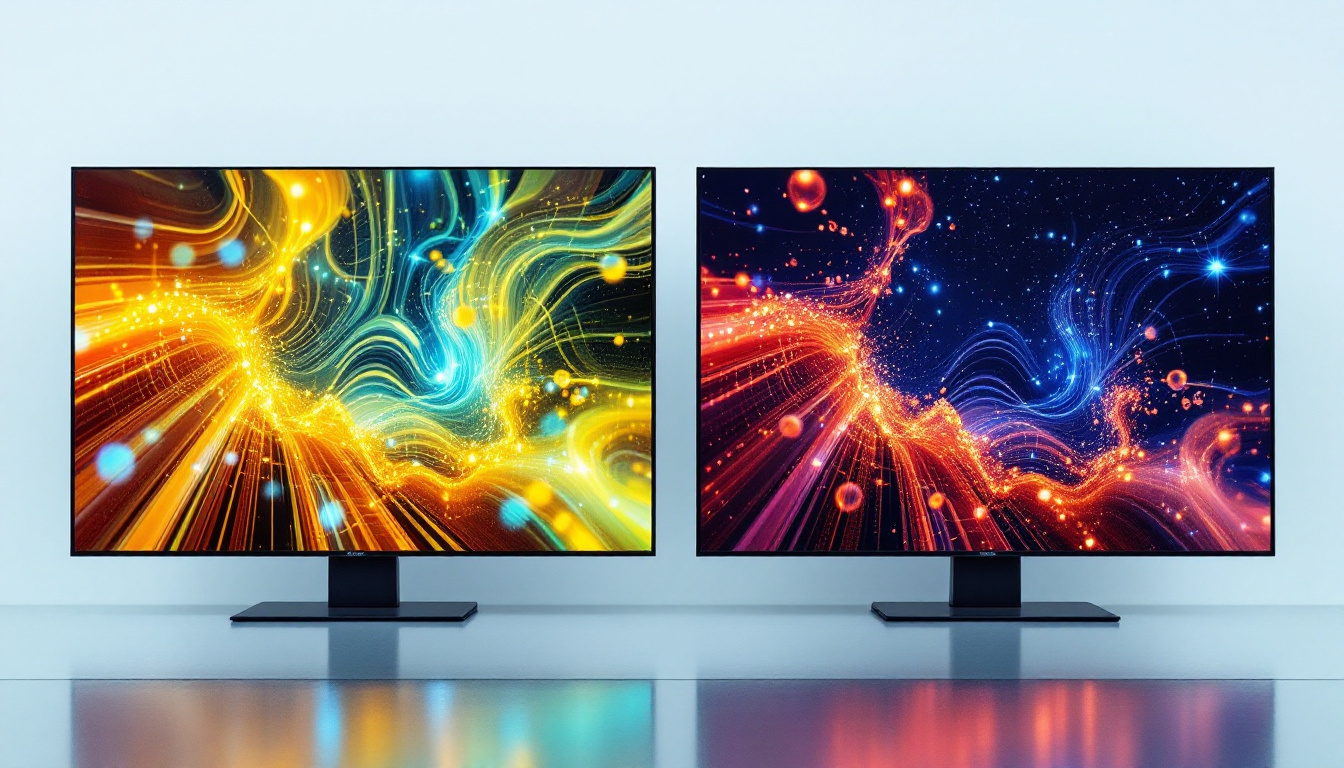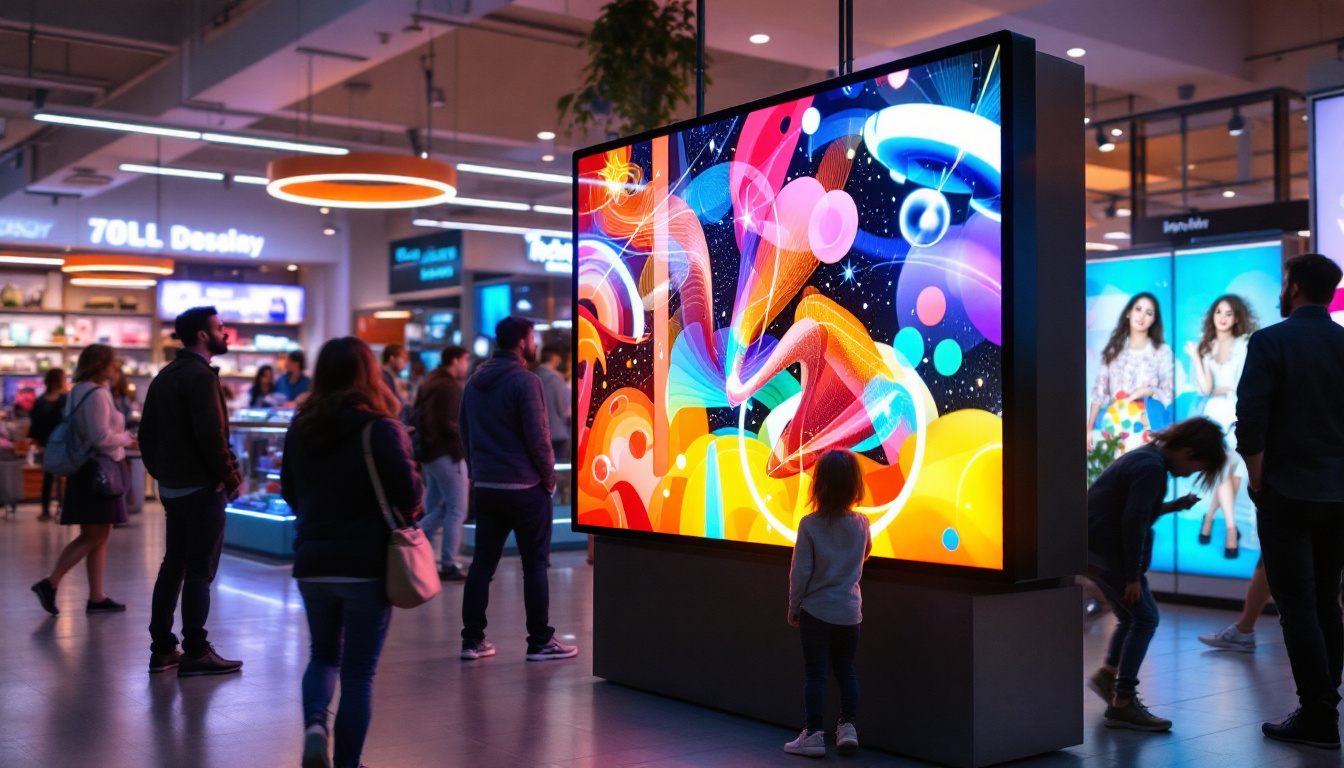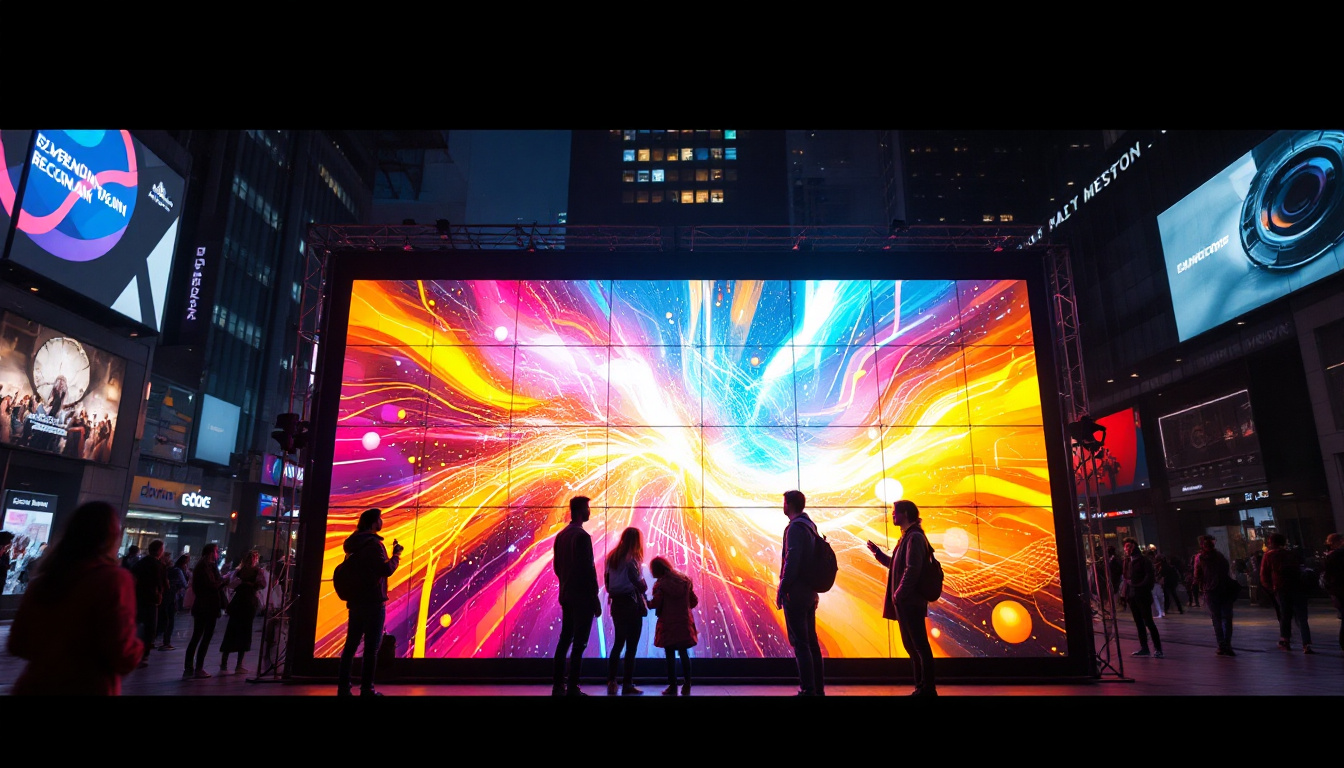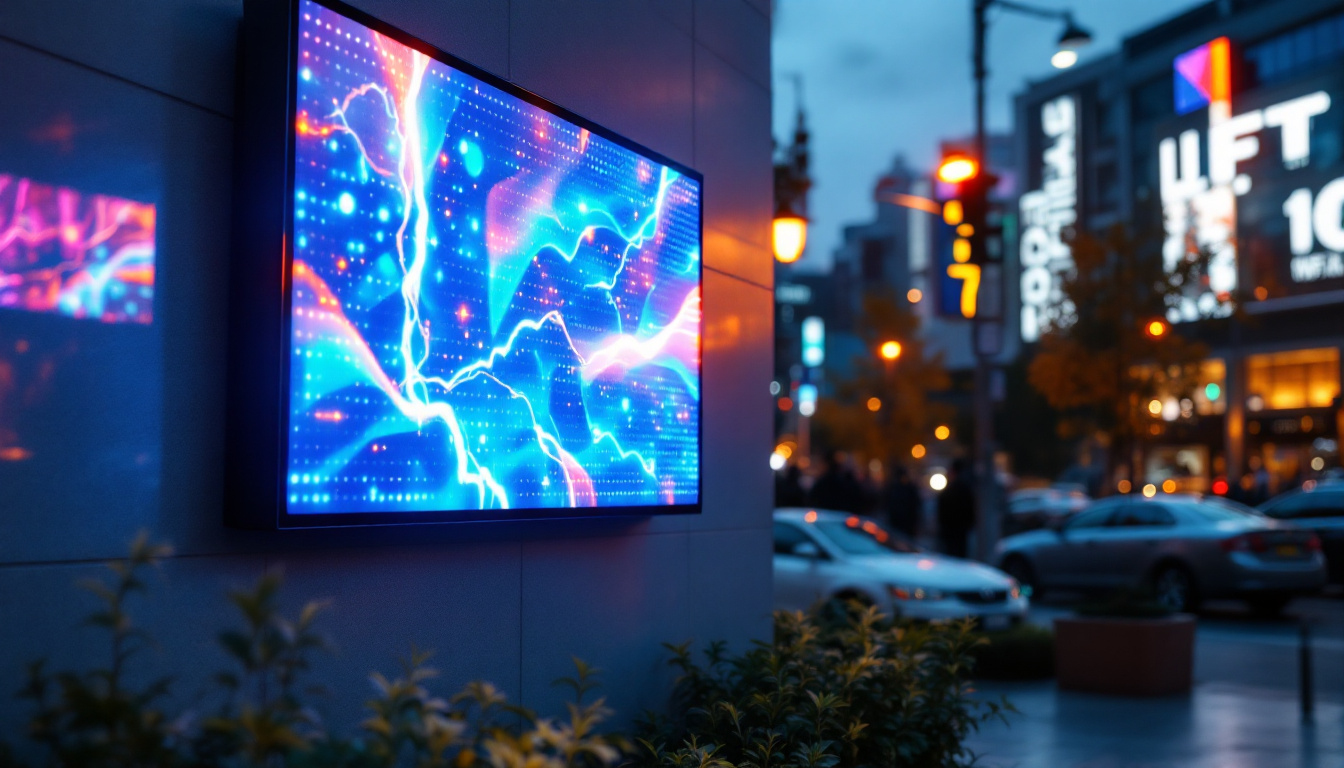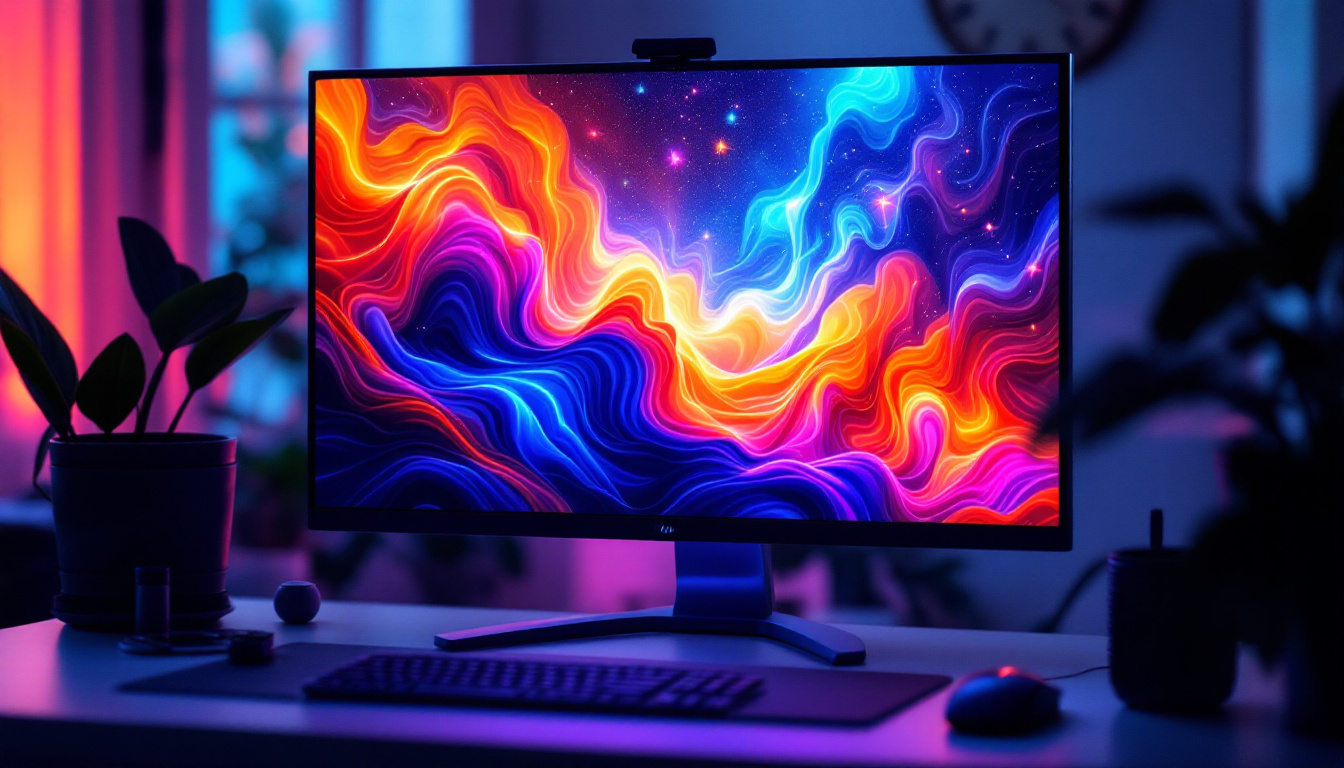In the rapidly evolving world of technology, interactive touch displays have emerged as a transformative tool across various sectors, from education to corporate environments. These displays, often powered by LED technology, offer a unique blend of functionality and user engagement. This article delves into the intricacies of interactive touch displays, exploring their components, applications, and the advantages they bring to different fields.
Understanding Interactive Touch Displays
Interactive touch displays are large screens that allow users to interact with content through touch gestures. Unlike traditional displays, which only present information, these screens enable users to manipulate data, making them ideal for collaborative environments. The technology behind these displays combines advanced sensors, software, and display technology, primarily LED.
The Mechanics of Touch Interaction
At the core of an interactive touch display is a touch sensing technology that detects user input. There are several methods of touch detection, including resistive, capacitive, and infrared. Capacitive touch screens, for instance, utilize the electrical properties of the human body to detect touch, allowing for multi-touch capabilities. This means multiple users can interact with the display simultaneously, enhancing collaborative efforts.
Resistive touch screens, on the other hand, respond to pressure applied to the screen surface. While they are generally less sensitive than capacitive screens, they can be used with styluses or gloved hands, making them suitable for various environments, including industrial settings. This versatility allows for their application in educational institutions, where students can engage with learning materials in a hands-on manner, or in healthcare, where professionals can access patient data quickly and efficiently without the need for additional devices.
LED Technology: The Heart of the Display
LED (Light Emitting Diode) technology is pivotal in the functioning of interactive touch displays. LED displays are known for their brightness, energy efficiency, and longevity compared to traditional LCDs. The use of LED backlighting enhances color accuracy and contrast, providing a vibrant visual experience that is crucial for engaging presentations and interactive applications.
Moreover, LED displays are available in various configurations, including direct view and rear projection. Direct view LED displays are particularly popular for their ability to create large, seamless images, making them ideal for public displays and interactive installations. These displays can be customized to fit various environments, from corporate boardrooms to museums, where they can showcase dynamic content that captivates audiences. The scalability of LED technology also allows for the creation of video walls, which can transform any space into an immersive experience, further enhancing the potential for collaboration and engagement among users.
Applications of Interactive Touch Displays
The versatility of interactive touch displays allows them to be utilized in numerous fields, enhancing communication and collaboration. Here are some notable applications:
Education
In educational settings, interactive touch displays have revolutionized the way information is presented and absorbed. Teachers can use these displays to present multimedia content, engage students in interactive lessons, and facilitate group activities. The ability to annotate directly on the screen allows for dynamic teaching methods that cater to various learning styles.
Furthermore, these displays can connect to various devices, enabling students to share their work and ideas in real-time. This collaborative approach not only fosters engagement but also enhances critical thinking and problem-solving skills among students.
Corporate Environments
In the corporate world, interactive touch displays are becoming essential tools for meetings and presentations. They provide a platform for brainstorming sessions, allowing teams to visualize ideas and concepts effectively. With the integration of video conferencing software, remote teams can collaborate seamlessly, bridging the gap between in-person and virtual meetings.
Additionally, these displays can be used for digital signage within corporate spaces, showcasing important information, announcements, and branding messages. The interactive nature of these displays ensures that the content is not only seen but also engaged with, making communication more effective.
Healthcare
The healthcare sector is also benefiting from the implementation of interactive touch displays. In hospitals and clinics, these displays can be used for patient education, allowing healthcare professionals to explain complex medical information in an accessible manner. Interactive diagrams and videos can enhance understanding and improve patient outcomes.
Moreover, interactive displays can streamline administrative tasks, such as scheduling appointments and managing patient records. By providing an intuitive interface, healthcare providers can improve efficiency and reduce the likelihood of errors.
Advantages of Interactive Touch Displays
The integration of interactive touch displays into various sectors offers several advantages that enhance user experience and operational efficiency. Here are some key benefits:
Enhanced Engagement
One of the most significant advantages of interactive touch displays is their ability to engage users actively. Whether in a classroom, boardroom, or healthcare setting, these displays encourage participation and collaboration. Users can interact with content, share ideas, and provide feedback in real-time, creating a more dynamic environment.
This level of engagement is particularly important in educational settings, where active participation can lead to better retention of information and improved learning outcomes. In corporate environments, enhanced engagement during meetings can lead to more productive discussions and innovative solutions.
Improved Collaboration
Interactive touch displays facilitate collaboration by allowing multiple users to interact with the content simultaneously. This feature is especially beneficial in team settings, where brainstorming and idea generation are crucial. Teams can work together to manipulate data, create presentations, and develop strategies, all in real-time.
Furthermore, the ability to connect to various devices enhances collaboration, as team members can share their screens, documents, and applications with ease. This interconnectedness fosters a more cohesive working environment, regardless of physical location.
Streamlined Communication
Effective communication is vital in any organization, and interactive touch displays play a significant role in streamlining this process. By providing a platform for visual communication, these displays can convey complex information more clearly than traditional methods.
Whether through digital signage, presentations, or interactive training sessions, the use of visuals can significantly enhance understanding and retention. This clarity in communication is particularly important in sectors like healthcare, where accurate information is critical.
Challenges and Considerations
While interactive touch displays offer numerous benefits, there are also challenges and considerations that organizations must address before implementation. Understanding these factors can help in making informed decisions.
Cost Implications
The initial investment in interactive touch displays can be significant, particularly for high-quality LED models. Organizations must weigh the costs against the potential benefits and consider their budget constraints. While the long-term advantages often justify the expense, it is essential to conduct a thorough cost-benefit analysis.
Additionally, ongoing maintenance and software updates may incur further costs. Organizations should plan for these expenses to ensure the longevity and functionality of their interactive displays.
Training and Adaptation
Another challenge is the need for training and adaptation among users. While interactive touch displays are designed to be user-friendly, staff and students may require time to become proficient in using the technology effectively. Providing adequate training resources and support is crucial for maximizing the benefits of these displays.
Moreover, organizations should consider the varying levels of technological proficiency among users. Tailoring training programs to accommodate different skill levels can help ensure that everyone can benefit from the interactive features.
Integration with Existing Systems
Integrating interactive touch displays with existing systems and technologies can pose challenges. Organizations must ensure compatibility with current software and hardware to avoid disruptions in workflow. This may involve upgrading or replacing outdated systems, which can add to the overall cost.
Careful planning and consultation with IT professionals can help facilitate a smooth integration process. Organizations should also consider scalability, ensuring that the chosen interactive display solutions can grow and adapt with their needs over time.
Future Trends in Interactive Touch Displays
The future of interactive touch displays is promising, with ongoing advancements in technology paving the way for even more innovative applications. Here are some trends to watch:
Artificial Intelligence Integration
As artificial intelligence (AI) continues to evolve, its integration into interactive touch displays is expected to enhance user experience significantly. AI can enable more intuitive interactions, such as voice commands and gesture recognition, making the technology even more accessible.
Furthermore, AI can analyze user behavior and preferences, allowing for personalized content delivery and improved engagement. This level of customization can transform how organizations interact with their audiences, whether in education, corporate settings, or public spaces.
Augmented and Virtual Reality
The incorporation of augmented reality (AR) and virtual reality (VR) into interactive touch displays is another exciting trend. These technologies can create immersive experiences that enhance learning and engagement. For instance, in educational settings, AR can bring complex concepts to life, allowing students to visualize and interact with 3D models.
In corporate environments, VR can facilitate virtual meetings and training sessions, providing a more engaging and interactive experience. As these technologies become more mainstream, their integration with interactive touch displays will likely become more prevalent.
Advancements in Display Technology
Ongoing advancements in display technology will continue to improve the quality and functionality of interactive touch displays. Innovations such as microLED and OLED technology promise to deliver even better color accuracy, contrast, and energy efficiency.
These advancements will not only enhance the visual experience but also expand the potential applications of interactive touch displays across various sectors. As technology continues to evolve, organizations will have access to more powerful and versatile tools for communication and collaboration.
Conclusion
Interactive touch displays represent a significant leap forward in how information is presented and interacted with across various fields. Their ability to engage users, facilitate collaboration, and streamline communication makes them invaluable tools in today’s technology-driven world. While challenges exist, the benefits far outweigh the drawbacks, making them a worthy investment for organizations looking to enhance their operations.
As technology continues to advance, the future of interactive touch displays looks bright, with exciting innovations on the horizon. By embracing these advancements, organizations can position themselves at the forefront of their respective industries, fostering a culture of collaboration and engagement that drives success.
Discover LumenMatrix LED Display Solutions
Ready to elevate your interactive touch display capabilities? LumenMatrix is at the forefront of LED display innovation, offering a wide array of solutions tailored to your needs. From Indoor and Outdoor LED Wall Displays to specialized options like Vehicle, Sports, and Floor LED Displays, our products are designed to transform your space and captivate your audience. Embrace the future of visual communication with LumenMatrix’s Custom, All-in-One, and Transparent LED Displays. Check out LumenMatrix LED Display Solutions today and experience the power of advanced LED technology.


